Different types of mutations
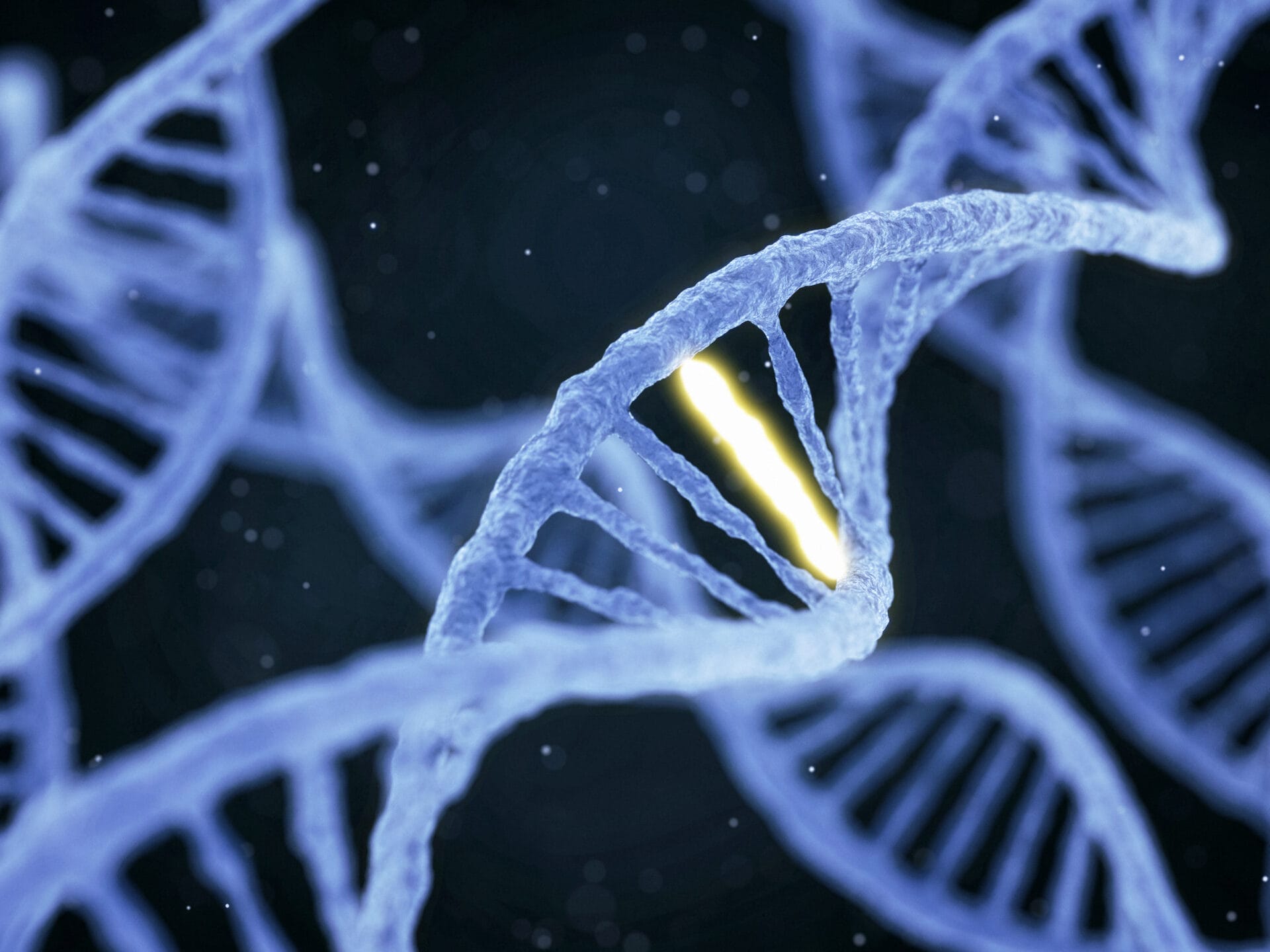
Throughout life, our DNA can accumulate changes to its sequence, known as mutations. There are lots of different mutations that can occur in DNA.
- The building blocks of DNA are called bases, known as A, T, C and G.
- Changes to the sequence of bases are called mutations. They range from small-scale mutations affecting one or only a few bases, to large-scale mutations where whole sections of DNA are changed.
- Some might have no effect, but others can affect how a protein functions or how a cell behaves.
Different types of mutations
Small-scale mutations
Small-scale mutations are usually limited to a single base or a short sequence of bases within a gene.
- Point mutation – when one base in the DNA sequence is changed.
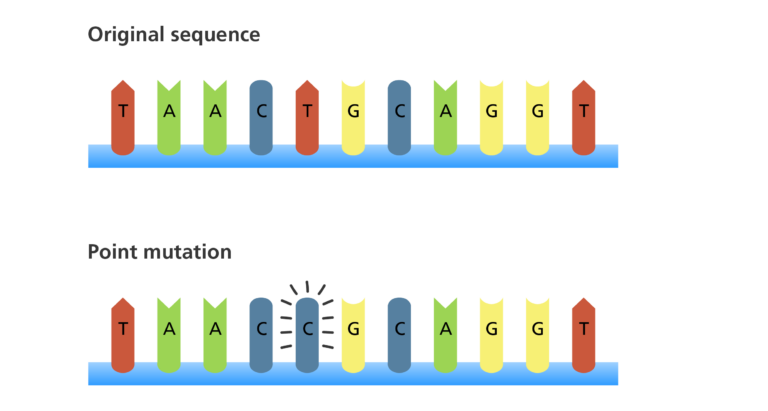
- Substitution – when one or more bases in the sequence is replaced by the same number of bases. For example, below, TGC is substituted for an GAT.
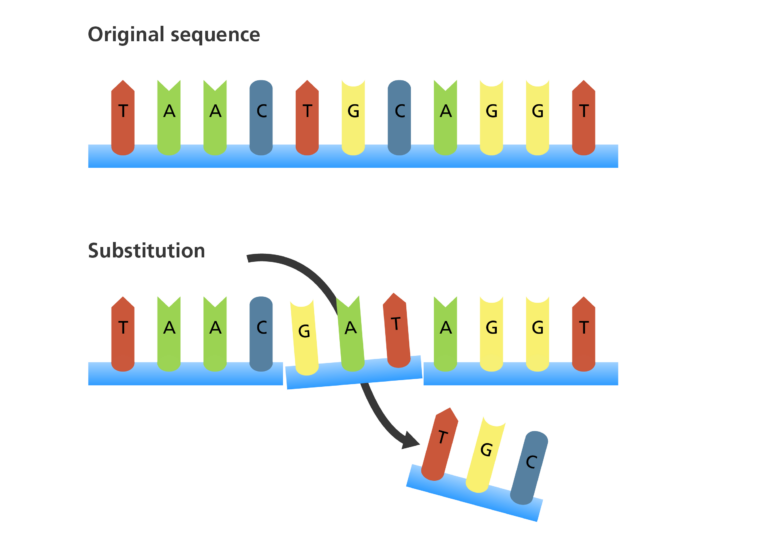
- Inversion – when a segment of DNA is reversed end to end.
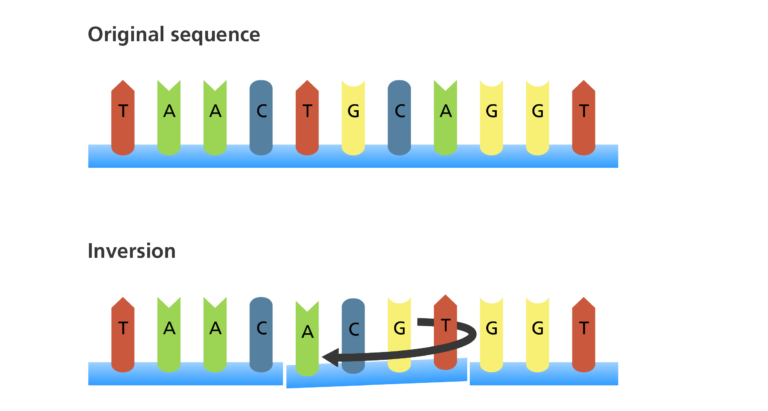
- Insertion – when one or more bases is added to the sequence.
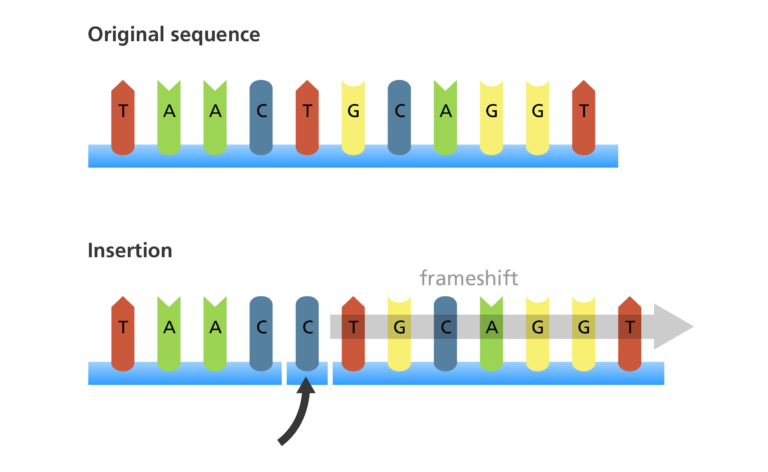
- Deletion – when one or more bases is deleted from the sequence.
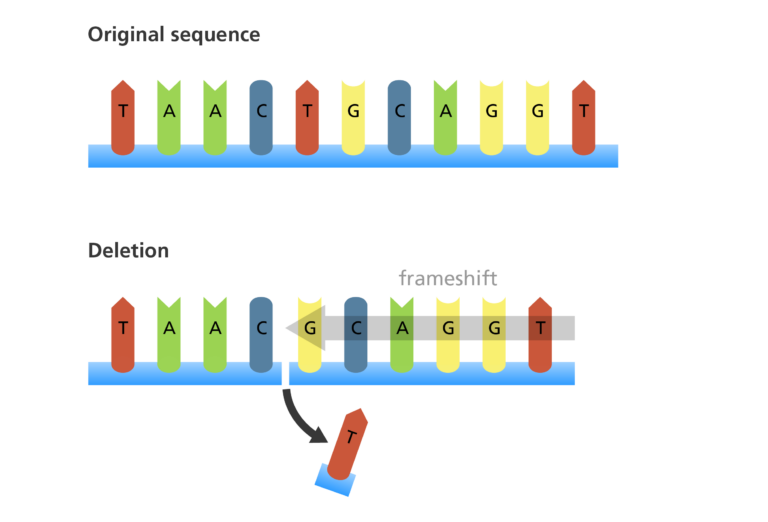
Large-scale mutations include:
- Copy number variations (CNVs) – the insertion, repeat or loss of large chunks of DNA, up to 5 million bases long.
- Duplication of genes, causing an increase in the number of copies of a gene.
- Deletions of large regions of the chromosome. This can cause the loss of one copy of a gene in an organism that previously had two copies, or the loss of both copies.
- Movement of sections of DNA from one location to another, known as translocation.
- Addition of an extra or partial extra copy of a chromosome.